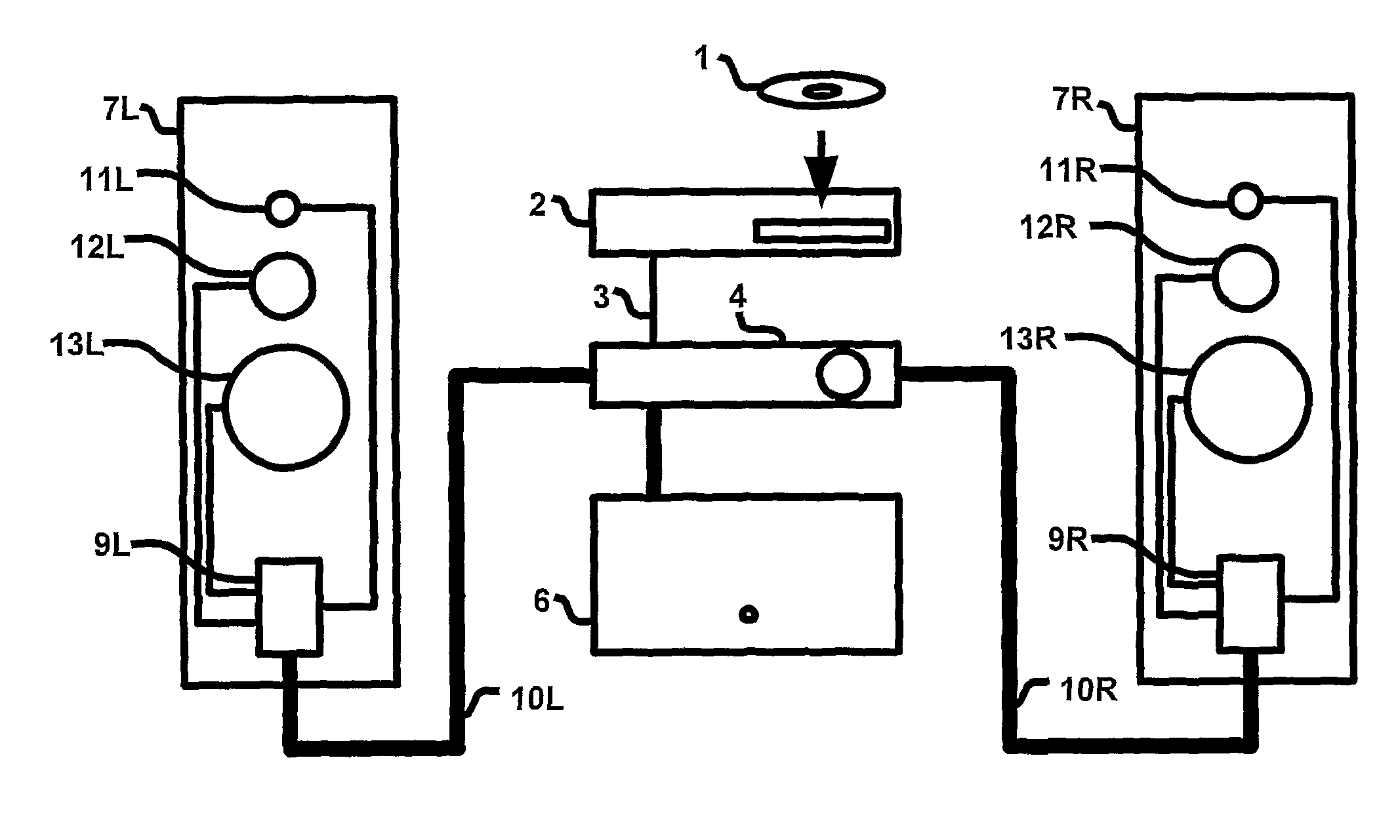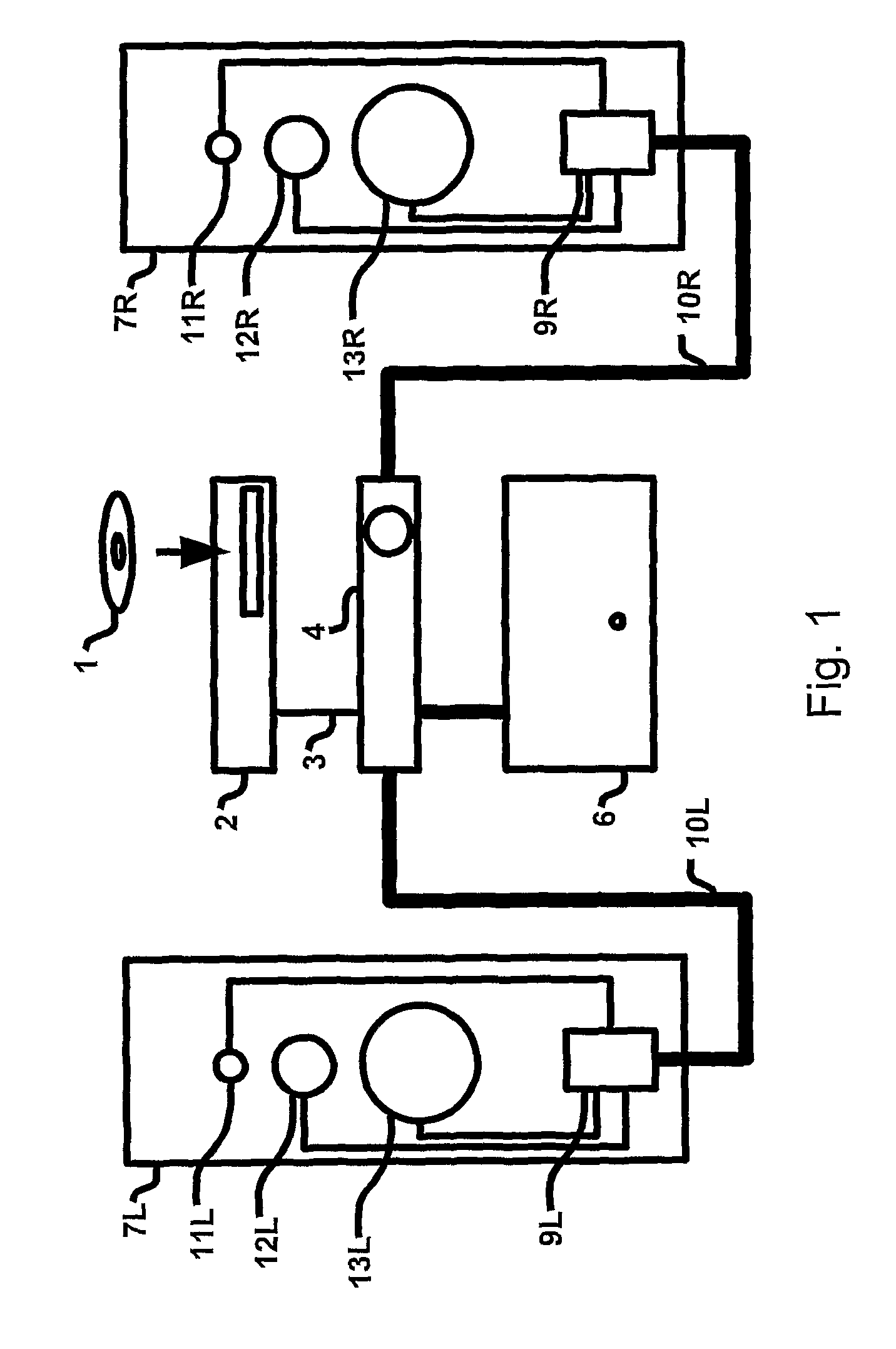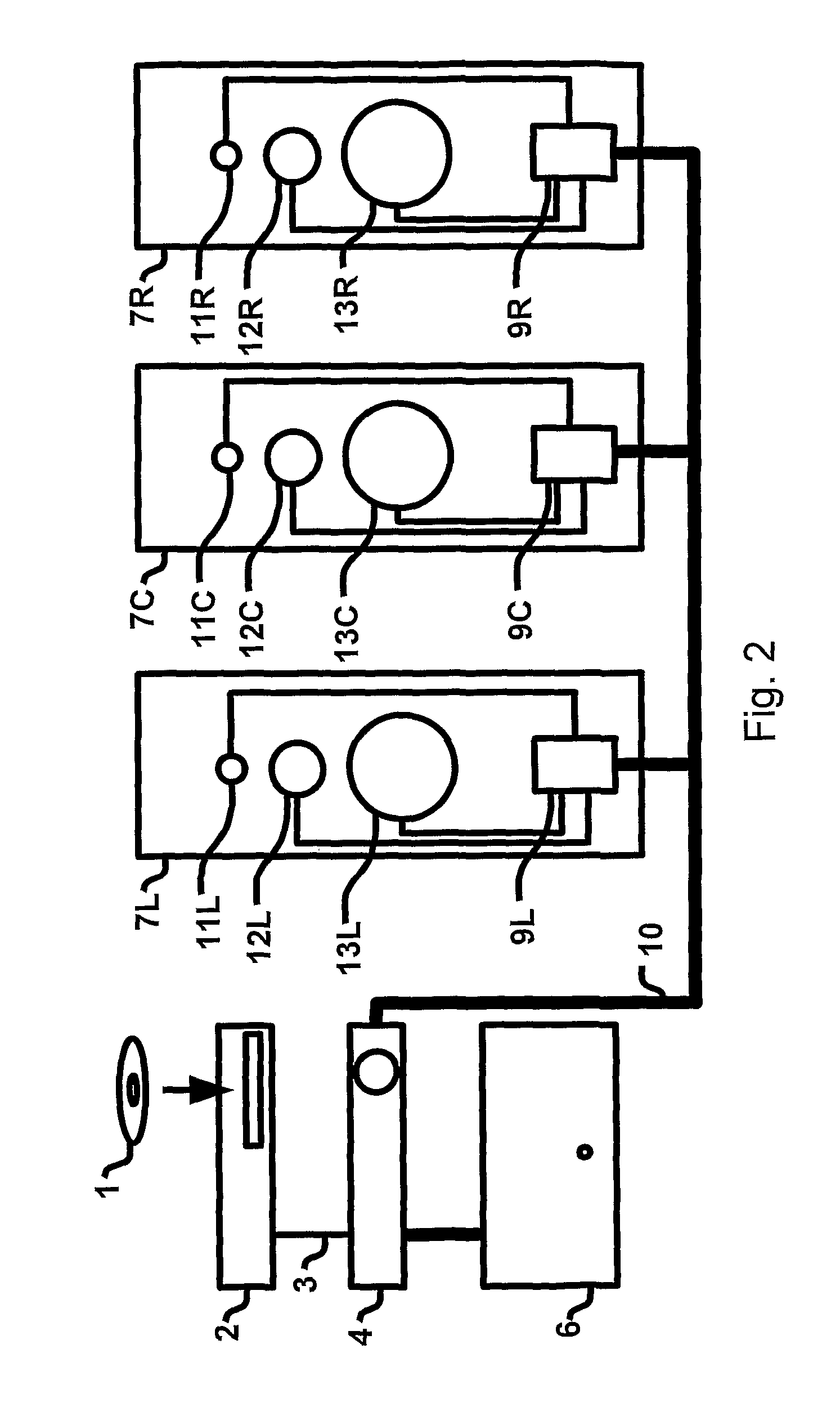Sound reproducing system with superimposed digital signal
a digital signal and sound reproduction technology, applied in the field of sound reproduction systems, can solve the problems of high precision and great power of systems, and achieve the effects of reducing the cross section of leads, high efficiency, and reducing power transfer demand
- Summary
- Abstract
- Description
- Claims
- Application Information
AI Technical Summary
Benefits of technology
Problems solved by technology
Method used
Image
Examples
Embodiment Construction
[0023]The description follows the path of the signal from the playback unit to the loudspeaker drivers.
[0024]The signal from the digital playback unit usually conforms to a standard for the digital transfer of sound, for instance S / PDIF (belong to standard IEC-60958), AES / EBU (belongs to standard AES3) or DSD™ (direct stream digital). The signal may either contain information of uncompressed sound samples (for instance pulse-code modulated—PCM), a compressed data stream that has to be decoded before it can be reproduced (for instance Dolby Digital™ or DTS™), or a data stream that directly corresponds to a sound signal if it is to be sent directly through suitable hardware (DSD™). The control unit 4 or the processing unit 15 in the amplifier unit 9 is capable of decoding a compressed data stream.
[0025]In a preferred embodiment, the control unit 4 prepares the signal with or without said decoding, by transforming it so that it conforms to the AES / EBU-standard for uncompressed stereo s...
PUM
 Login to View More
Login to View More Abstract
Description
Claims
Application Information
 Login to View More
Login to View More - R&D
- Intellectual Property
- Life Sciences
- Materials
- Tech Scout
- Unparalleled Data Quality
- Higher Quality Content
- 60% Fewer Hallucinations
Browse by: Latest US Patents, China's latest patents, Technical Efficacy Thesaurus, Application Domain, Technology Topic, Popular Technical Reports.
© 2025 PatSnap. All rights reserved.Legal|Privacy policy|Modern Slavery Act Transparency Statement|Sitemap|About US| Contact US: help@patsnap.com



